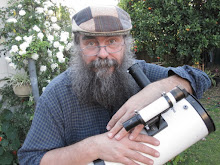Tuesday, February 04, 2025
Thursday February 6 to Thursday February 13
The Full Moon is Wednesday February 12. Saturn, Venus, Jupiter and Mars are visible all together (briefly) in the evening sky and lined up with the Moon. The Moon is near Jupiter on the 6th and 7th, then Mars on the 9th and 10th. Jupiter is past opposition and is visible all evening long. Mars is rising in the evening sky, and is visible all night long. Mercury is lost in the twilight. Fading Comet C/2024 G3 (ATLAS) is still visible in binoculars.
The Full Moon is Wednesday February 12.
Venus is readily visible from early twilight to when the sky is fully dark, although its sets shortly after. You will need a clear, level horizon to see Venus when the sky becomes fully dark. Venus is drawing away to Saturn, which is becoming harder to see in the horizon murk.
The insets are the telescopic views of Venus and Saturn at this time.
Comet C/2024 G3 (ATLAS) is visible in binoculars in the evening twilight above Saturn and Venus. While the nucleus has disintegrated the tail is still visible but a shadow of its former self. For more details and spotter charts see my Comet C/2025 G3 page.
Similar views will be seen from the rest of Australia at roughly the equivalent local time (90 minutes after sunset).
Similar views will be seen from the rest of Australia at roughly the equivalent local time (90 minutes after sunset).
Elsewhere in Australia will see a similar view at the equivalent time (90 minutes after sunset).
Mercury is lost in the morning twilight.
Venus is lowering in the evening twilight and is readily visible. In the evening Venus is drawing away from Saturn.
Mars is rising in the evening sky. Mars was at opposition, when it is biggest and brightest as seen from Earth, on January the 16th and is visible all night long. The Moon is near Mars on the 9th and 10th.
Jupiter is high in the the evening sky when the sky is fully dark. It is close near the waxing moon on the 6th and 7th.
Saturn is lowering in the evening sky drawing away from Venus.Saturn is soon lost in the twilight.
Star Map via Virtual sky. Use your mouse to scroll around and press 8 when your pointer is in the map to set to the current time.
Cloud cover predictions can be found at SkippySky.
Here is the near-real time satellite view of the clouds (day and night) http://satview.bom.gov.au/
Labels: weekly sky







 Click to read about or order
Click to read about or order Click to read about or order
Click to read about or order Click to read about or order
Click to read about or order Click to read about or order
Click to read about or order




